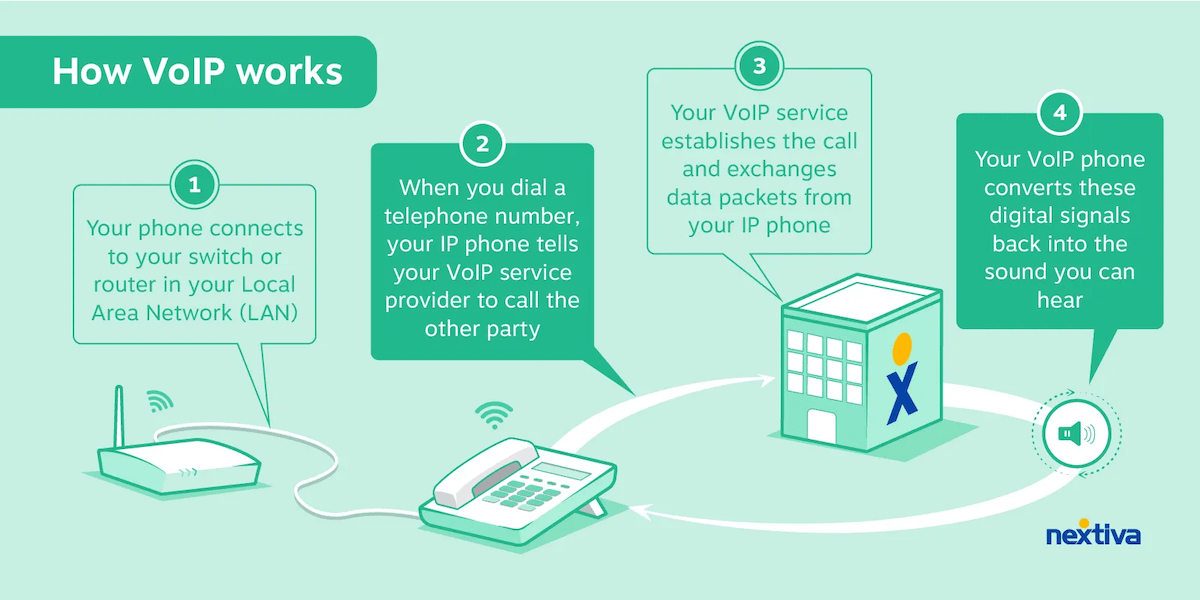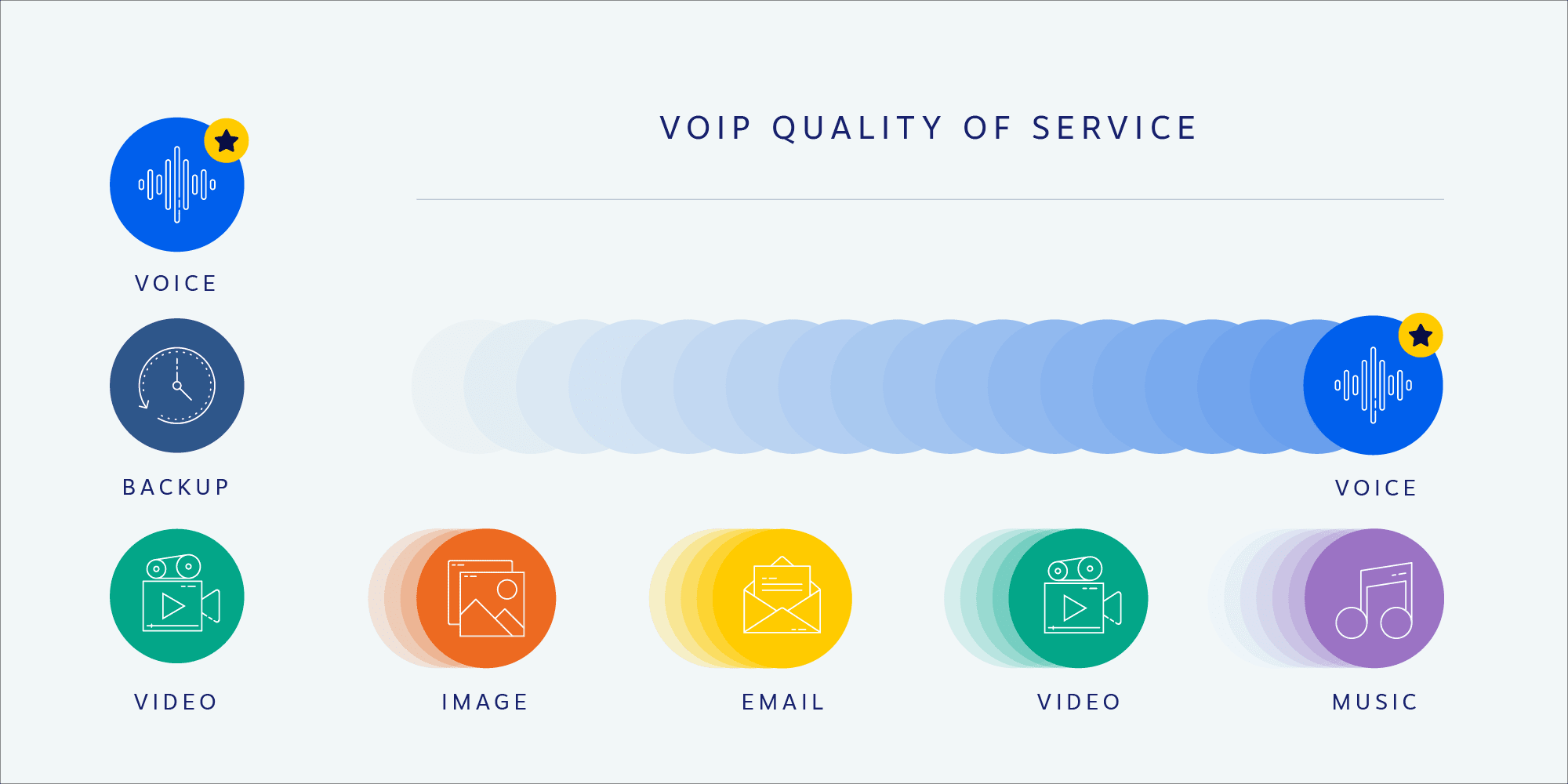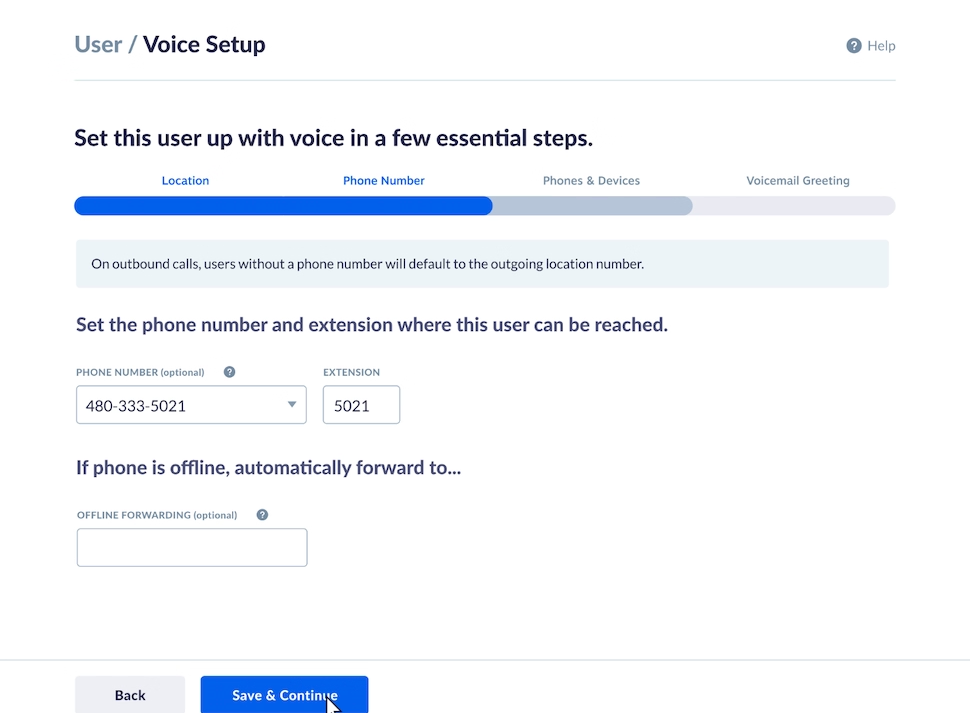

Is your business still stuck with a clunky traditional phone system that limits scalability and drains your budget? VoIP offers a modern solution with significant cost savings (think: slashing your monthly bill by up to 60%) and advanced features that boost your communication efficiency.
However, some businesses shy away from VoIP due to perceived setup complexities. With the right approach, transitioning to VoIP can be smooth and seamless.
This guide will show you how to set up VoIP quickly, minimize upfront costs, and reap the full potential of your new business phone system.

VoIP technology eliminates the need to host any hardware or software on your end. A third-party VoIP provider takes care of the VoIP server and all the technical infrastructure for you.
Traditional analog phones rely on a tangle of wires and dedicated phone jacks for each user. VoIP cuts the cord, letting you use your existing internet connection to make calls. This translates to:
Instead of bulky landlines, VoIP uses SIP phones. These devices connect to your VoIP provider through your internet, eliminating the need for dedicated phone lines.
While traditional phone systems require a complex PBX (Private Branch Exchange) for multiple users, VoIP offers a more user-friendly approach.
Here’s some additional equipment you might need:
At the most basic, you need the internet pipeline, a VoIP “pipe” provider, and VoIP end-point devices as the minimum requirements to build a VoIP phone system. Optionally, additional hardware like VoIP routers and ATAs provide more flexibility.
Now onto setting up your VoIP phone system. Let’s look at a few simple steps to quickly set up VoIP.
Before getting started, your internet connection must meet the bandwidth requirements to support VoIP calls without disruptions. As mentioned earlier, you’ll need at least 100kbps of upload and download bandwidth per concurrent call.
Run a speed test to verify your internet speeds, and test for factors like jitter and packet loss that can degrade call quality. Wired ethernet connections are preferred over WiFi to minimize interference.
If you have multiple users or bandwidth-heavy applications, configuring Quality of Service (QoS) on your router to prioritize VoIP traffic can help ensure optimal performance.
 VoIP QoS Illustrated Example" width="2000" height="1000" />
VoIP QoS Illustrated Example" width="2000" height="1000" />
Once your network is VoIP-ready, you’ll need to invest in the right hardware for your needs.
VoIP desk phones with RJ-45 ethernet ports provide a familiar telephony experience similar to traditional analog phones. Wireless VoIP headsets enable hands-free mobility.
If you want your phone calls to sound great, you should invest in a high-end VoIP desk phone like the Polycom VVX601. There are also less expensive options for both desk phones available if all you need is to make and receive phone calls.
For businesses looking to save on upfront costs, softphone applications that run on computers or cell phones can serve as virtual VoIP phones. Additionally, analog telephone adapters (ATAs) allow you to reuse your existing standard analog phones with your new VoIP system.
With the networking and hardware requirements addressed, your next step is selecting the best VoIP service provider that offers the features your business needs.
Look for providers with advanced call routing capabilities to ensure calls are directed efficiently to the right person or department.
Auto-attendant and interactive voice response (IVR) menus present a professional front for greeting callers. Call analytics and reporting tools enable you to monitor agent performance and call metrics.
Many providers also integrate with customer relationship management (CRM) platforms and offer collaboration features like video conferencing, screen sharing, and team messaging.
Also, look for security features like end-to-end encryption and compliance with key data privacy protocols.

When signing up for a business VoIP service, you can choose to port over your existing phone numbers or get new local, toll-free, or vanity numbers (e.g. 1-800-FLOWERS) that align with your company’s branding and market presence.
Most reputable VoIP providers handle this porting process seamlessly.
Once you’ve established your VoIP provider account and acquired phone numbers, the final step involves physically installing and configuring your VoIP devices.
For dedicated VoIP phones, simply plug them into your office’s data network using ethernet cables. Follow the manufacturer’s instructions for connecting any VoIP headsets via cables or Bluetooth pairing. And install the softphone apps on computers or mobile devices designated for VoIP usage.

Even if you have a fast internet connection, it’s critical to thoroughly test your new VoIP phone lines before fully rolling them out. Pay close attention to the following factors when making test calls:
Try testing during periods of peak network activity when more devices/applications are consuming bandwidth. Network jitter and congestion can lead to dropped calls, choppy audio, and other VoIP issues.
Pro Tip: A wired ethernet connection direct to the router/network switch is always preferable to using Wi-Fi, which is more susceptible to interference that causes latency, jitter, and lost packets.
You can also test your caller ID functionality by calling (800) 444-4444, a diagnostic service number.
If you do encounter any persistent quality issues during testing, refer to guides on common VoIP problems and easy fixes.